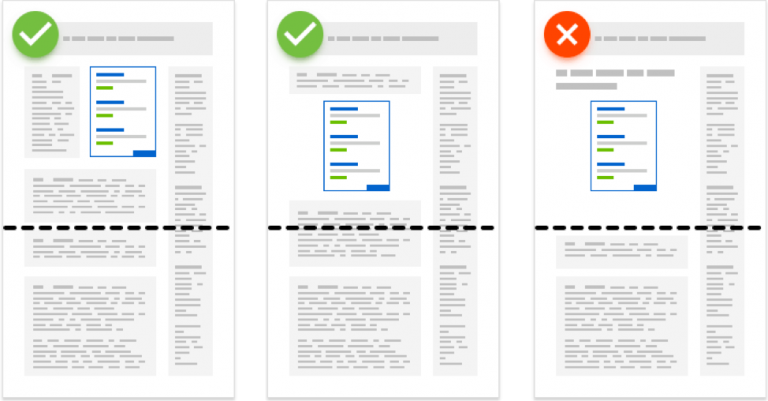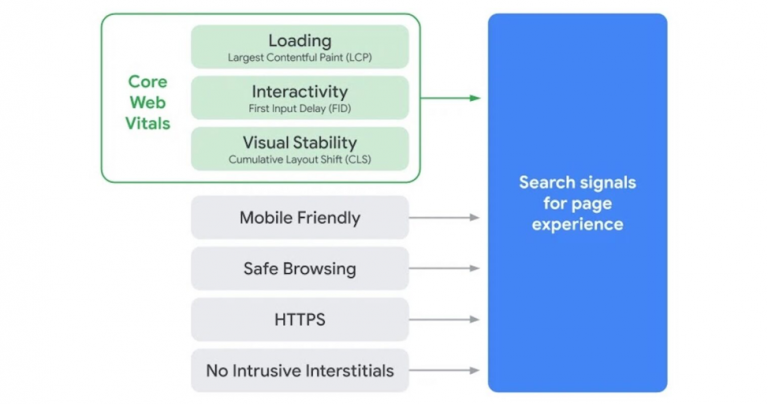Customer experience has become top of mind for all types of marketers and SEO and search marketing campaigns of every variety.
However, having the wrong landing page copy – and sometimes even the wrong page – impacts conversion and revenue. Ultimately, this affects the success of any campaign.
Even if you think that it is still great that your page ranks high, no matter what the content is, you can face the following consequences:
- CTR goes down: The snippet may lack relevancy, and it does not call for many clicks.
- Bounce rate goes up: Once users do not get a sufficient answer to their query, they bounce without a second thought.
- Conversions go down: Another page with less relevant content may have no call-to-action.
Don’t worry, these things can be fixed.
Below is a checklist of emergency actions that will help you put everything in place.
Keyword Optimization
1. Title Tag
Search engines are able to interpret a page’s topic without exact keywords in the HTML title tag, so it still has importance, as it is seen in three places of high visibility:
- SERPs.
- Web browser tabs.
- Social networks (when the page is shared).
What to Do:
- Watch out for title length: Keep it under 60 characters. Use character savers (like “&” and “/”). Don’t use CAPS LOCK.
- Keep the titles up to 50-60 characters long (for them not to get truncated in the SERPs). Long titles are shortened to about 600-700px on the SERP.
- Use target keywords smartly: Don’t overstuff titles with keywords; use one or two.
- Place keywords in the first part of a title tag: When users skim search listings, they will see your prominent info first.
- Use a brand in the title: It can work if your brand is popular – it will endorse your content.
- Avoid duplicate titles: Duplicate titles may be an indication of duplicate content, which can hurt your Google rankings.
In a vacuum, title tags may seem less significant. However, when working in context and conjunction with all other on-page factors and with all pages of a website, it is a factor in gaining more traffic.
Stay up to date on SEJ with these articles below:
2. Meta Description
The importance of this tag is comparable to the title tag. The meta description helps with:
- SERPs.
- Social networks (when the page is shared).
- Images.
- Schema markup.
The description gives users more details on your content and helps them determine whether it is relevant to their query.
Google advises you should also add some information about the page that the search engine will scrape for a more colorful SERP. You could also add the date of publication and the name of the author.
This preview influences your CTR.
What to Do:
- Watch out for length: Keep it about 155 characters.
- Make an ad out of your description: Write a description that serves as an advertisement for your page. Plus, search engines highlight users’ query keywords in bold in SERP snippets. Such bolded words draw users’ attention. So, optimizing your meta description for keywords is quite important.
- Avoid duplicate descriptions: Duplicate descriptions may serve as an indication of duplicate content to search engines.
- Give your page a unique meta description that clearly reflects what value the page carries.
- Add an engaging call-to-action or unique proposition.
Stay up to date on SEJ with these articles below:
- 10 Most Important Meta Tags You Need to Know for SEO
- Google Explains Why it Rewrites Meta Descriptions
3. Header Tags
HTML header tags (H1-H6) are used to structure content and show its hierarchy within the page.
The use of header tags helps search engines read, understand and content much better. For the end-user, they help them navigate through the landing page – making it easier for them to find, engage and convert.
Header tags also provide a structure for a particular piece of content that allows visitors to consume the main points in a short period of time.
According to Google’s John Mueller,
“…headings on a page help us to better understand the content on the page. Headings on the page are not the only ranking factor that we have. We look at the content on its own as well.
But sometimes having a clear heading on a page gives us a little bit more information on what that section is about.”
What to Do:
- Place headings in a hierarchical order: Use only one H1 per page and then proceed to level-structuring with H2-H6.
- Optimize headings for keywords: Headings usually equal the main points of your page, so it is advisable to include your target keywords in them.
- Make your headings stand out: While search engines read your meta tags, your visitors read text. Use different font sizes, formatting, and styles to make your headings catch users’ eyes.
- Keep it readable for users.
Stay up to date on SEJ with these articles below:
4. Content
It is as clear as day — content rules.
For search engines to find your content, they need some cues. Keywords are the best cues you can incorporate into your page.
What to Do:
- Place keywords in the first 100-150 words of the page: Both users and search engines will find them quicker this way.
- Use all kinds of related words: In the era of semantic search, Google does not need exact keywords to answer the query. The only important thing here is the meaning behind the words. Feel free to use all kinds of synonyms and related terms.
- Keep your content at considerate length: Longer content usually ranks higher. However, the length may vary from niche to niche. Thus, to understand what length is good enough, look at the pages that already rank high for your targeted keywords.
- Balance content and page layout with images and engaging CTAs.
Stay up to date on SEJ with these articles below:
- Landing Page Best Practices: 10 Top Tips for Writing Copy That Converts
- 10 Examples of Awesome B2B Landing Pages
5. Internal Search
When your website is over 20 pages, it can be a good idea to have a search box on your website.
A great thing about a search box is that you can integrate it with Google Analytics and view the queries that visitors enter at your site. This data will let you:
- Understand what users search for and check whether you have it in place. If you follow the lead, you will reduce bounce rates considerably.
- Find new keyword ideas based on the queries that users type into your search box.
Stay up to date on SEJ with these articles below:
- On-Site Search & SEO: Everything You Need to Know
- Google Warns About Assumptions Based on Site: Search
6. Open Graph
Open Graph tags make snippets out of your links when they are shared via social media. This way, you can control how your content is represented after sharing on Facebook, Twitter, LinkedIn, etc.
It makes sense then to optimize OG tags to entice clicks and conversions.
What to Do:
- Optimize your OG title and description: As you have those special chunks of HTML that are used by social media, first of all, use them, and second, use them wisely. Remember that these elements won’t be used in SERPs, so it is not that important to optimize them for your keywords, but instead, let them speak to your potential visitors.
- Make the most of OG image: An image makes a shareable link much more attractive, as it can call for some memorable associations. Plus, it is possible to place text on the image to recap the major point of your content.
Visual Optimization
7. Schema Markup
Schema markup is a number of special vocabularies that you can use to mark your pages. As a result, your snippets will stand out in SERPs.
For example, your snippets may have additional elements like:
- Star ratings.
- Images.
- Number of reviews.
What to Do:
Google has two quite handy tools to help you with adding schema markup to your pages:
- Markup Helper for implementing a markup on a website.
- Testing Tool for previewing your snippets.
Stay up to date on SEJ with these articles below:
- What Is Schema Markup & Why It’s Important for SEO
- Schema Success Stories: Using Structured Data to Boost Traffic
8. Multimedia
Images, diagrams, infographics, and video tutorials make content more engaging, thus increasing the time spent on your landing page.
What’s more, besides clear improvement of user experience, some of these elements can be optimized for target keywords.
What to Do:
- Optimize alt attributes of images: Pick useful images (diagrams, infographics, etc.) and add the alt text for them. Let their description amplify the context of your content by introducing target keywords. This way, you will make your images more visible both to search engines and visitors.
- Add a video transcript: If you have relatively thin content, the video transcript will become the additional content on your page. Plus, it is pretty handy when users cannot watch the video for any reason or when they do not quite understand some parts of it.
Stay up to date on SEJ with these articles below:
9. Above-the-Fold Content
The term “above the fold” had come from newspaper editors and become an SEO concept after Google’s page layout update, when it started penalizing sites for lots of ads above the imaginary fold.
What to Do
Even if you get a fair amount of revenue from displaying ads on your website, you have to remember that too many ads can have a negative impact on search rankings.
Make sure to have enough content above the fold:

10. Social Share Buttons
The prominent placement of social share buttons will make sharing of your content even easier for your visitors.
What to Do:
- Place social share buttons strategically: These buttons may slow down your page’s load time, so use them on pages that are good candidates for attracting a good amount of referral traffic.
Technical Optimization
11. Page Speed
Page speed is now one of the most critical SEO considerations today. The upcoming roll-out of Core Web Vitals and the shift to mobile-first indexing shows how important Google thinks the user experience is.
What to Do:
- Measure and improve your optimization Score: Focus on measuring Page Speed and follow the common performance best practices.
- Get familiar with Google’s new approach to measuring page speed.
- Understand key concepts such as E-A-T and Core Web Vitals.

Stay up to date on SEJ with these articles below:
- Advanced Core Web Vitals: A Technical SEO Guide
- 7 Tips to Improve Your Core Web Vitals Scores & Page Experience Signals
12. Mobile Friendliness
Mobile now accounts for 54.8% of all web traffic worldwide, and Google is now rolling out mobile-first indexing.
This means that Google will look first on your mobile version when crawling, indexing, and ranking your websites, not your desktop version.
What to Do:
- Use responsive design for your site.
- Go through a checklist of the best practices for mobile-first indexing.
- Cater for user experience: Ensure your site (in general) and your key landing pages (in particular) load fast on both mobile and desktop, and all the content is displayed correctly.
Stay up to date on SEJ with these articles below:
- Google Redesigns Mobile Search Results
- Google: Mobile-Friendly Does Not Mean Ready For Mobile-First Index
Linking Optimization
13. Backlinks
Sometimes the wrong landing page will rank instead of your important page because it has higher authority backlinks, which is a strong relevancy signal to search engines.
What to Do:
- Compare the backlinks of the pages in question and check whether the wrong page has some backlinks of high authority.
- Contact the external sites and ask them to link to the page you need.
- Try to earn high authority backlinks for the page you need.
- Focus on natural links and quality over quantity.
Stay up to date on SEJ with these articles below:
14. Outbound Links
Outbound links to related external pages are a relevancy signal that helps search engines determine your page’s topic.
The wrong page that ranks may have more external links to high authority sites. Thus, search engines may think that this page is a hub of quality info and pull it to search listings.
What to Do:
- Make the right page a hub of quality info by consolidating on it all the external links to authority sites on a particular topic.
- Degrade the wrong page that ranks by removing the links to authority sites.
Stay up to date on SEJ with these articles below:
15. Internal Links
When several pages target the same topic (or keyword), your internal links get less valuable, and search engines cannot always determine the most relevant page for this topic. It is one of the most apparent reasons for the wrong page to rank.
What to Do:
- Create a topical cluster: By interlinking your posts on a particular subject, you are creating a field of expertise on this topic. In this field of knowledge, you can make the most prominent page rank higher by linking back to it from the less prominent pages. Try to use anchor text optimized for your keywords when you link to your other theme-relevant pages.
- Use redirects (carefully): You can redirect visitors from less prominent pages to the ones you’d like to rank for this topic or keyword.
Stay up to date on SEJ with these articles below:
De-optimization
It is a rare thing in an SEO world to advise on how to degrade ranking signals of your own page.
But when this page ranks instead of a more prominent one and does no good whatsoever, this is the only way to deal with this unpleasant situation.
Here is a short plan for this act of self-sabotage:
Take Away Targeted Keywords
Even though search engines can now determine a topic without exact-match keywords, it still won’t hurt to remove references to targeted keywords. This also includes anchor text that is optimized for keywords.
Merge Similar Pages
If you do not want to devalue a wrongly ranked page because it still contains valuable information and inbound links, you can consider merging these pages to create a master page on this topic.
Canonicalize
If you have a couple of pages with almost identical content, use rel=canonical to inform search engines which page is more important. It will prevent you from having duplicate content and save you from keyword cannibalization.
Noindex
This measure can be taken for those pages that are still valuable for your visitors, but you do not need them to rank in search results.
For example, it is true for blog category pages. You do not want them to be indexed and potentially end up in search results instead of your much more valuable pages.
Just use robots meta tag in your HTML to noindex such pages.
Delete
It sounds pretty radical, but you have to do it if this page has:
- Thin content and steals traffic from similar but a much better page.
- No value to your visitors.
Before deleting, make sure that this page does not have any important backlinks and internal links. Also, add a 301 redirect from this page to a similar one that you would like to be ranking.
I’m sure that by going through the list I have laid out above, you will find help to ensure you get the right landing page for optimal conversion.
More Resources:
- Top 8 Essential Website Optimization Strategies
- 10 Best Ways to Optimize Mobile Landing Pages
- Core Web Vitals: A Complete Guide
Image Credits
All screenshots taken by author, May 2021





